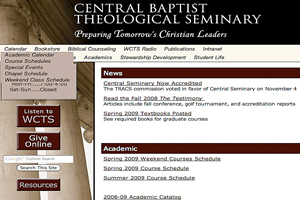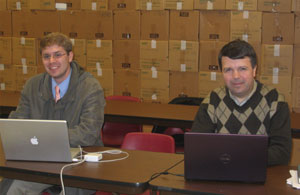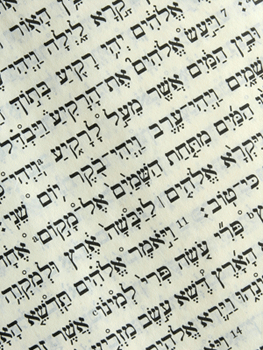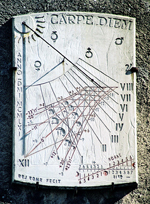
I am preparing to teach a ThM class this coming fall at DBTS, Hebrew Exegesis of Ecclesiastes. In preparation for this class, I recently acquired Craig Bartholomew‘s
Ecclesiastes (Baker Commentary on the Old Testament Wisdom and Psalms). Bartholomew’s work is a welcome addition to the increasing number of commentaries on this book.
Because I lead a PhD seminar on Ecclesiastes at Central Baptist Seminary in the spring of 2009, I have interacted with other material Bartholomew has written on Ecclesiastes and appreciate his insightful scholarly interaction with the voluminous sources on Ecclesiastes. Consequently, I have been looking forward to Baker’s release of his commentary. My first impressions reflect that my wait has been worthwhile.
Bartholomew is highly qualified to write this commentary. His 1998 publication Reading Ecclesiastes: Old Testament Exegesis and Hermeneutical Theory, a revision of his 1996 dissertation at the University of Bristol, shows a depth and breadth of scholarship in tracing the history of Old Testament hermeneutics and biblical exegesis, specifically in Ecclesiastes. While the complexities associated with the history of Ecclesiastes studies are described and critiqued, he also argues that the “implied author” of Ecclesiastes is divided between the puzzling nature of the divine gift of joy, like those found in the carpe diem passages, and the frustrating situations one finds in a sin-cursed world, such as those found in the hebel passages. Bartholomew’s solution to these tensions in Ecclesiastes is found in one’s “Christian worldview.” As such, his interpretative approach to Ecclesiastes offering joy and faith as solutions to life’s tensions is a helpful contrast to the many commentaries that take a pessimistic interpretation of Ecclesiastes.
Bartholomew provides a thorough introduction to Ecclesiastes (pp. 17???99). His introduction provides a helpful and detailed discussion of germane introductory issues:
title (pp. 17-18)
canonicity (pp. 18-20)
history of interpretation (pp. 21-43)???a must read
authorship and date (pp. 43-54)???is Ecclesiastes a “royal fiction” with a post-exilic date?
social setting (pp. 54-59)
text (59???61)
genre and literary style (pp. 61-82)???informative discussion
structure (pp. 82-84)
reading Ecclesiastes within the context of Proverbs and Job and its connection to Torah (pp. 84-93)
message (pp. 93-96)
Ecclesiastes and the New Testament (pp. 96-99)
The remainder of this volume is divided into the actual commentary (pp. 101-373), followed by a postscript (pp. 375-89), bibliography (pp. 391-420), and indices referencing subjects, authors, scripture and other ancient writings (pp. 421-48). The commentary itself is divided into three sections.
Frame Narrative: Prologue (1:1-11), pp. 101-117
Qohelet’s Exploration of the Meaning of Life (1:12-12:7), pp. 119-357
Frame Narrative: Epilogue (12:8-14), pp. 359-373
As you can tell, Qohelet’s Exploration of the Meaning of Life (pp. 119-357) consumes the bulk of his discussion. This is divided into 21 units. With each of the 21 units, as well as the prologue and epilogue, Bartholomew provides his own translation, followed by a section on interpretation and theological implications.
As Bartholomew takes us through the various mazes of life, he shows how joy and faith undergirds the believer’s journey through one’s frustratingly enigmatic life. Thus, his work has many highlights. I cannot resist mentioning one example. The theme of Ecclesiastes is introduced in Ecclesiastes 1:2 with its fivefold use of hebel: “Hebel of hebels, says the Preacher, hebel of hebels. All is hebel.” The fact that v. 2 is essentially repeated in 12:8 (“Hebel of hebels , says the Preacher; all is hebel”) confirms that 1:2 is the subject of Ecclesiastes. Besides the eight uses of hebel in 1:2 and 12:8, it is used thirty other times in the book at key junctures. Certainly, an important issue in Ecclesiastes is the interpretation of hebel. Many options have been suggested on the translation of this term ranging from a word with negative connotations, such as “vanity” (KJV) or “meaningless” (NIV), to a word allowing for more positive uses, such as Bartholomew’s option “enigmatic.” While this word is discussed in a number of different sources (see pp. 93-94, 104-6; and pp. 88-95 of my “Message of Ecclesiastes“), his translation of it as “enigmatic” opens the possibility that one may find God-centered satisfaction in the many twists of life. His rendering of hebel is just one of the many commendable features of this volume. Craig Bartholomew has provided us with an exegetically detailed interaction with the Hebrew text and a theologically informative commmentary. I can highly recommend this commentary to biblical scholars, pastors, and serious Bible students.
Technorati Tags:
Ecclesiastes, Wisdom literature




 Technorati
Technorati Flickr
Flickr del.icio.us
del.icio.us Ice Rocket
Ice Rocket Wikipedia
Wikipedia








